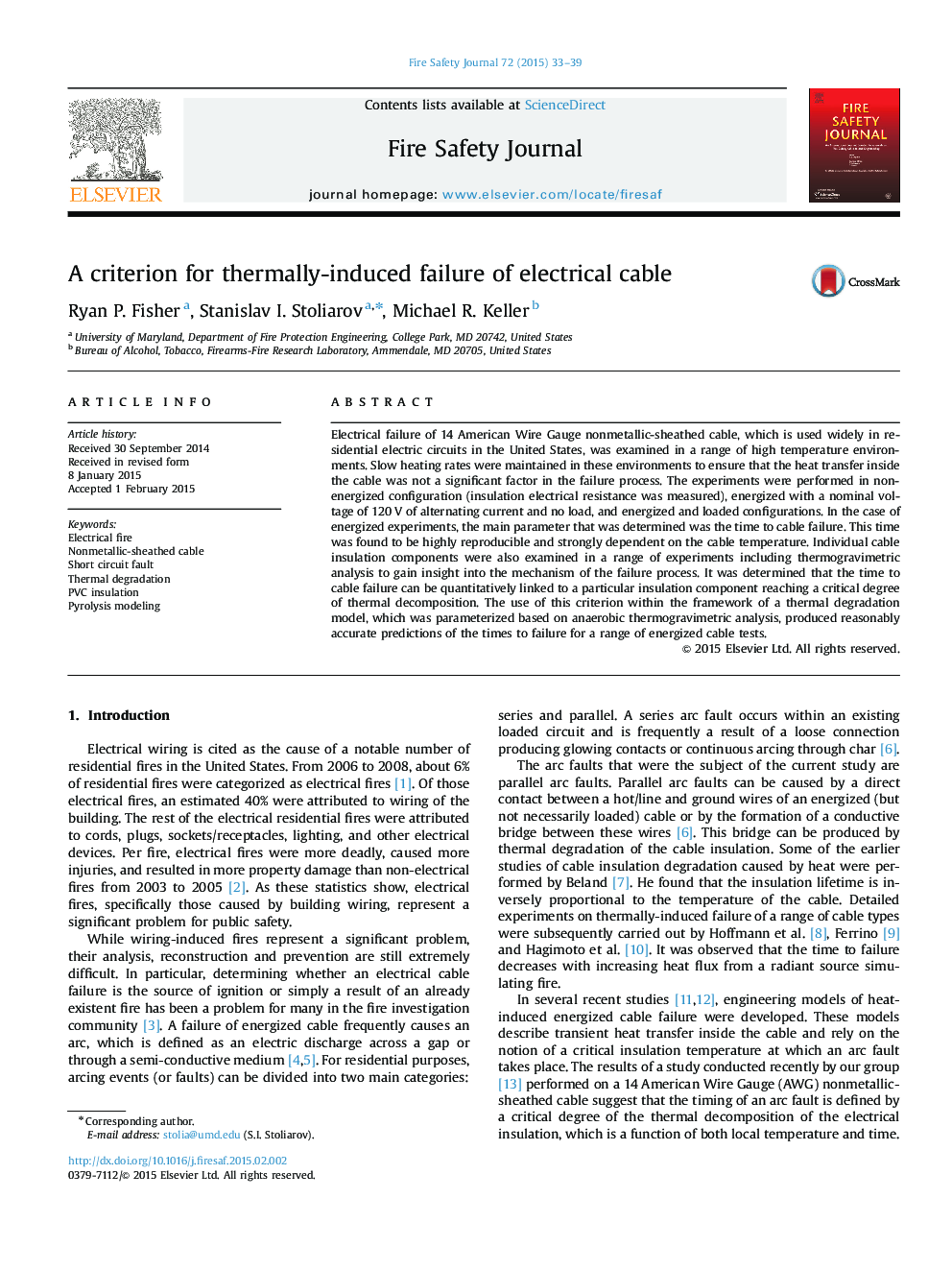| Article ID | Journal | Published Year | Pages | File Type |
|---|---|---|---|---|
| 6742062 | Fire Safety Journal | 2015 | 7 Pages |
Abstract
Electrical failure of 14 American Wire Gauge nonmetallic-sheathed cable, which is used widely in residential electric circuits in the United States, was examined in a range of high temperature environments. Slow heating rates were maintained in these environments to ensure that the heat transfer inside the cable was not a significant factor in the failure process. The experiments were performed in non-energized configuration (insulation electrical resistance was measured), energized with a nominal voltage of 120Â V of alternating current and no load, and energized and loaded configurations. In the case of energized experiments, the main parameter that was determined was the time to cable failure. This time was found to be highly reproducible and strongly dependent on the cable temperature. Individual cable insulation components were also examined in a range of experiments including thermogravimetric analysis to gain insight into the mechanism of the failure process. It was determined that the time to cable failure can be quantitatively linked to a particular insulation component reaching a critical degree of thermal decomposition. The use of this criterion within the framework of a thermal degradation model, which was parameterized based on anaerobic thermogravimetric analysis, produced reasonably accurate predictions of the times to failure for a range of energized cable tests.
Related Topics
Physical Sciences and Engineering
Engineering
Civil and Structural Engineering
Authors
Ryan P. Fisher, Stanislav I. Stoliarov, Michael R. Keller,
